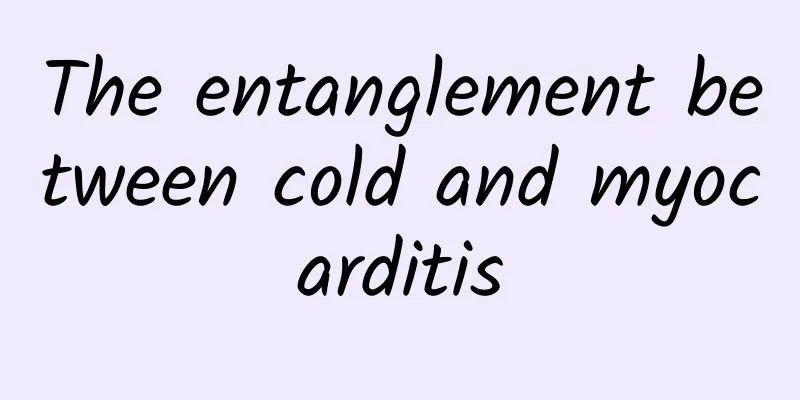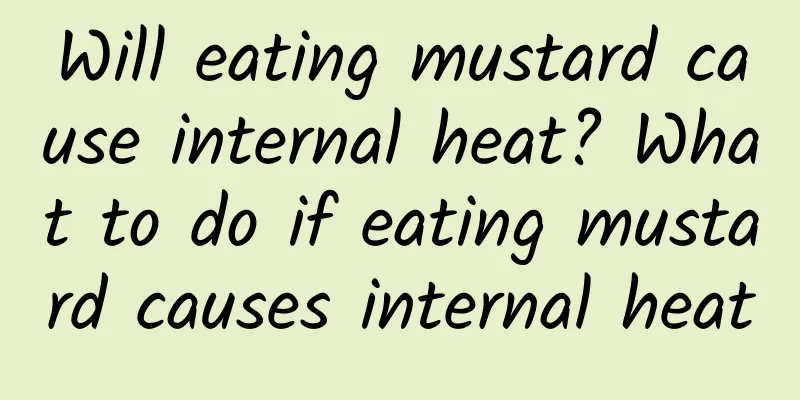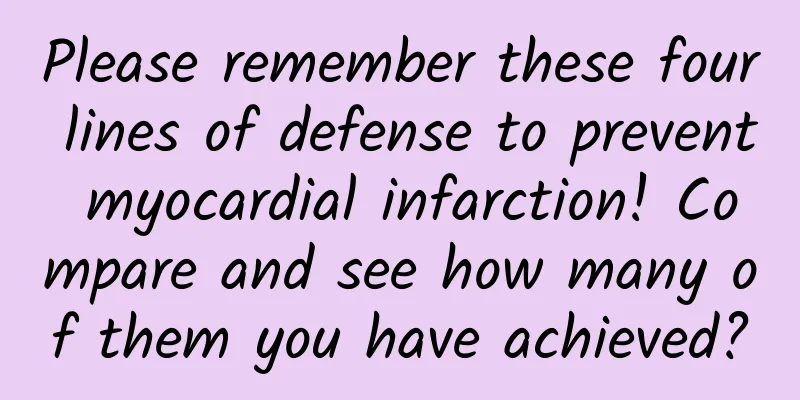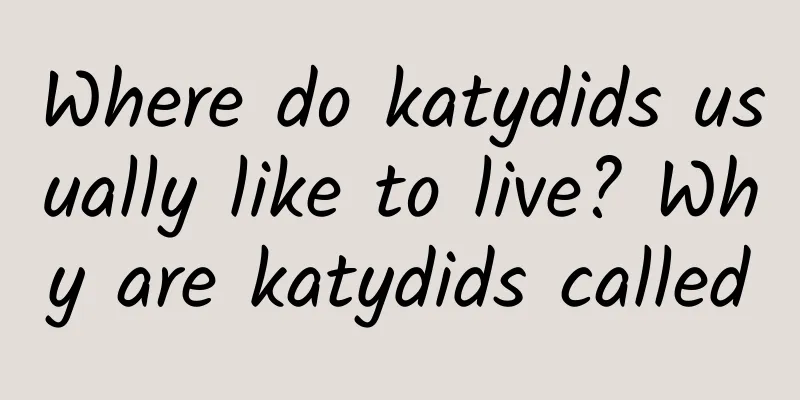The entanglement between cold and myocarditis

|
During ward rounds, parents often ask, "If the baby's CKMB value is slightly high, does it mean that the baby has myocarditis? Is it because the cold has lasted for a long time and has turned into myocarditis?" Today, let's take a look at the relationship between colds and myocarditis. 1. What is a cold? What is myocarditis? Cold is a common name for common people, also known as upper respiratory tract infection, which can be caused by a variety of viruses. More than 90% of the pathogens are viruses, among which Coxsackie virus (also a common virus that causes hand, foot and mouth disease), adenovirus, cytomegalovirus, herpes simplex virus, influenza, and parainfluenza virus are susceptible pathogens of the upper respiratory tract, and are also pathogens that induce viral myocarditis or myocardial damage. Clinical manifestations include nasal congestion, sneezing, runny nose, fever, cough, headache, general discomfort and other symptoms, which can heal themselves in most cases. Viral myocarditis is an acute or chronic inflammation of the myocardium caused by various viruses. The viruses that cause colds can also cause viral myocarditis. Viruses can directly invade the heart muscle and cells, while causing the heart's own inflammation and myocardial cell necrosis, leading to heart dysfunction, arrhythmia, and damage to the liver, kidney, and brain. Viral myocarditis is more common in children over 2 years old and is a serious pediatric disease. This is mainly because children are in the growth and development stage, the functions of organs such as the heart are not yet perfect, and their own resistance is not strong, making them vulnerable to various foreign bacteria and viruses. In particular, Coxsackievirus and echovirus have a special affinity for the myocardium. While causing a cold, they can also attack the myocardium - this is how viral myocarditis is caused. The power of blood circulation in the human body mainly comes from the heart. When children suffer from viral myocarditis, the function of the heart will be affected. If the disease is delayed, the heart may be in a "paralyzed" state, and life will be threatened. Therefore, when children are infected with related viruses after catching a cold, and do not get timely rest and reasonable treatment, the disease will be delayed, aggravated, and there is still the possibility clinically that myocarditis or myocardial damage complications will occur. 2. What are the symptoms of viral myocarditis? Viral myocarditis may present with fever, headache, cough, sore throat, joint pain, muscle pain, and general discomfort a few days before the onset of cardiac symptoms. These symptoms are quite similar to those of a cold. After the "cold" symptoms improve or disappear, signs of heart abnormalities begin to appear, such as faster or slower heartbeat, chest tightness, chest pain, dizziness, difficulty breathing, mental fatigue or irritability, pale complexion, cold sweats, loss of appetite or repeated nausea and vomiting, and upper abdominal pain. In severe cases, shortness of breath, repeated fainting, and even sudden death may occur. Therefore, it is very important for parents to find out whether their children have viral myocarditis as early as possible. Although parents are not doctors who can use examination methods to diagnose the disease, they can promptly detect the signs of viral myocarditis in children from various physical changes in children. Young children, especially newborns, have poor reactions when they have viral myocarditis, with paroxysmal facial cyanosis or paleness, sweating, shortness of breath, irritability, refusal to feed, and cold limbs; older children can describe symptoms such as physical fatigue, dizziness, palpitations, chest tightness, discomfort or pain in the precordial area, abdominal pain, cold sweats, etc. Most children have a history of respiratory or enteric virus infection before or at the same time as the onset of the disease. 3. What are the drug treatments for viral myocarditis? The main drug treatments for viral myocarditis in children are as follows: 1. Improve myocardial nutrition: such as 1,6-diphosphate fructose, vitamin C, coenzyme Q10, etc. 2. Large doses of immunoglobulin can be used to reduce myocardial cell damage in children through immune regulation. 3. Corticosteroids are not usually used. They should only be used in sufficient quantities and early in severe children with combined cardiogenic shock, fatal arrhythmias, etc. 4. If the child has arrhythmia, he or she also needs to take antiarrhythmic drugs. 5. Other treatments: Diuretics, digitalis, vasoactive drugs, etc. can be used in combination according to the child’s condition. **Four.** What else should parents pay attention to? First of all, the most important thing is to let the child get enough rest. He should stay in bed as much as possible during hospitalization. After discharge, he should not overwork at home or at school, and exercise should not be too strenuous. For infants, excessive crying should be avoided to avoid increasing the burden on the heart. In the early stages of the illness, children should be fed less fatty foods and should not be allowed to eat too much. They can be fed small meals frequently to ensure balanced nutrition. They should eat more fruits and vegetables rich in vitamin C, supplement with coarse grains, as well as lean meat, milk, beans and other high-quality proteins, dietary fiber, and multivitamins. Keep the air at home fresh and avoid noise in the room where the child is. It is also important to note that parents should try not to take their children to crowded public places, such as cinemas and supermarkets, to avoid reinfection and worsening of the disease. Through the above introduction, I hope that parents will pay more attention when taking care of their children in the future, and not take colds as a trivial matter. While actively treating the disease, they should closely observe other conditions of the child. Once any "clues" of heart abnormalities are found, the child should be hospitalized for diagnosis and treatment in time to avoid delaying the disease. (Lu Shiyang, Dezhou Women and Children's Hospital) |
<<: Is eye axis length related to myopia? Parents must read!
>>: Do you have wrist pain when writing or working? Try this method to relieve it!
Recommend
Pregnant women's liver function total protein and albumin are low
The physical health of pregnant women is very imp...
How to drive in the rain during a typhoon? Do you need to turn on the fog lights when driving in the rain?
Typhoons are common natural weather. Severe typho...
Cervical erosion 3 completed minimally invasive surgery
Cervical erosion is a common disease among women....
What to do if you have a bad complexion? 10 tips to make your face look rosy
There's no harm in being picky, even with veg...
What to do if you have erotic dreams and uterine contractions during pregnancy
Many women will experience many changes in their ...
How to treat dysmenorrhea caused by uterine cold?
I believe that many female friends have the probl...
What causes lower back pain during early pregnancy?
Many women experience tingling pain in the lower ...
How many weeks of pregnancy is normal for birth
Full-term newborns have good survival appeal, mod...
7 ways to keep women beautiful for life
Beauty is always a big deal for women. Some peopl...
Will my lower abdomen hurt when I am half a month pregnant?
Basically, all normal women will experience pregn...
When the doctor says, I'm going to give you a placebo...
In fact, the very act of seeing a doctor can have...
What are the reasons for sagging skin in women?
For women, skin is a face and a very important ti...
The menstrual flow is very small and almost
For women, having menstruation is a very normal p...
Symptoms of blocked gallbladder meridian in women
There are many meridians in the body, and each bl...









